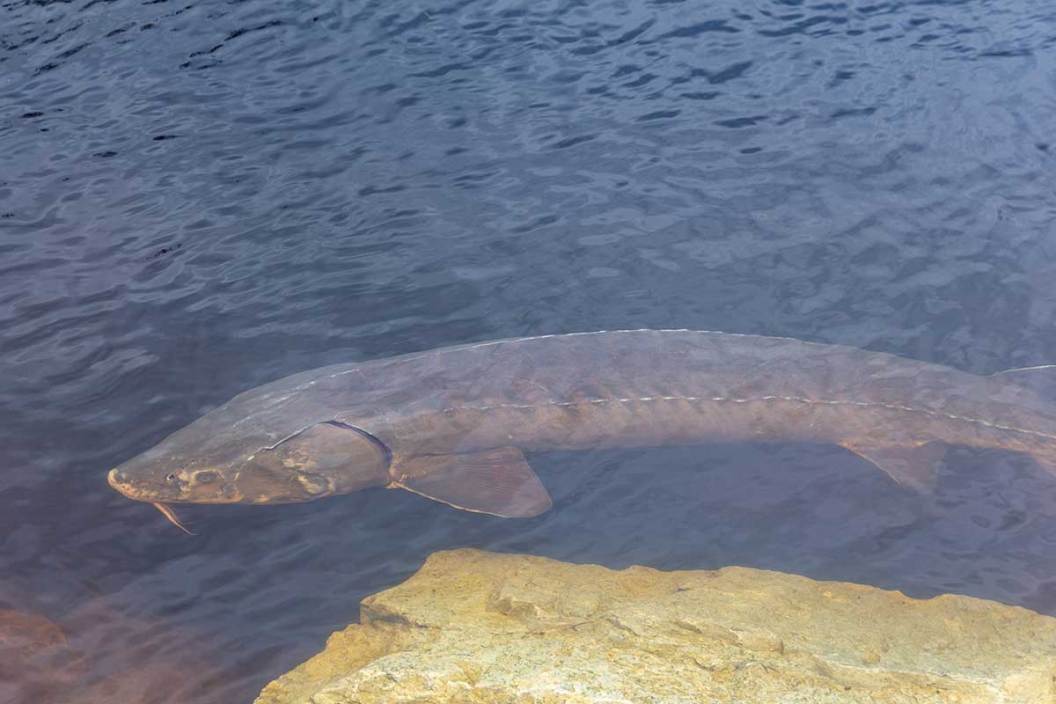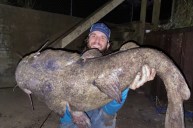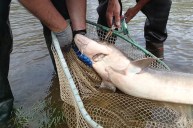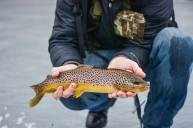Here are the basics you need to know about these big, prehistoric-looking fish.
The lake sturgeon (acipenser fulvescens) is a freshwater fish found throughout North America and just one of more than 20 species of sturgeon. They boast an incredibly long lifespan, with males typically living 55 years and females frequently making it to the 150 year mark. Lake sturgeon topping 100 pounds are common in many fisheries.
This unique-looking fish species has rows of bony plates covering its body, a dorsal fin, a projecting snout, and four barbels for directing food to a toothless mouth.
Lake sturgeon caviar is considered a delicacy, and many anglers enjoy its tender meat.
Where to Find Lake Sturgeon
Lake sturgeon prefer moderate water temperatures and can be found from the Hudson Bay through the Mississippi River system and into Alabama. Wisconsin, Michigan, Minnesota, New York, and Vermont are all well-known for lake sturgeon populations, particularly in large, deep lakes. Although overfishing has caused a decrease in numbers, the Great Lakes and St. Lawrence River still contain a fair amount of lake sturgeon.
Fishing for Lake Sturgeon
Lake sturgeon will typically migrate based on seasonal conditions, a need for food, or in search of spawning habitat.
The spring sturgeon spawn falls between April and early June. Females reach sexual maturity between 20-25 years and spawn once every 4-6 years, while males are at maturity several years earlier and spawn every 2-3 years.
They feed slowly on invertebrates such as insect larvae, crayfish, snails, leeches, and small fish along lake bottoms, sometimes going over a week without eating. Anglers typically have luck with nightcrawlers near a deep hole or steep dropoff in the early morning. Be sure your tackle is suited for at least 100-pound fish.
Seasons vary widely from state to state, so be sure to check DNR regulations.
NEXT: TROUT FISHING IN PENNSYLVANIA: EVERYTHING TO KNOW




